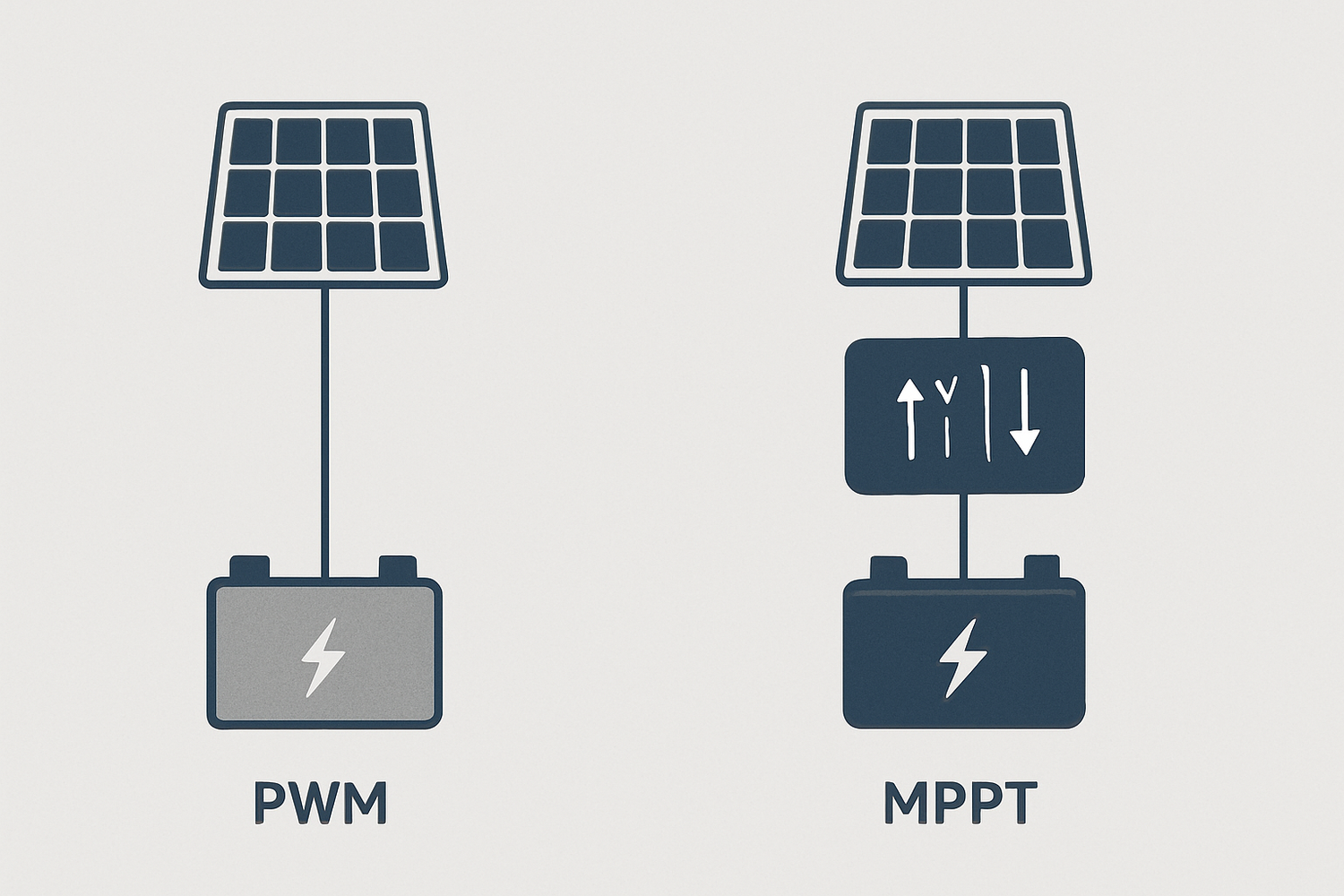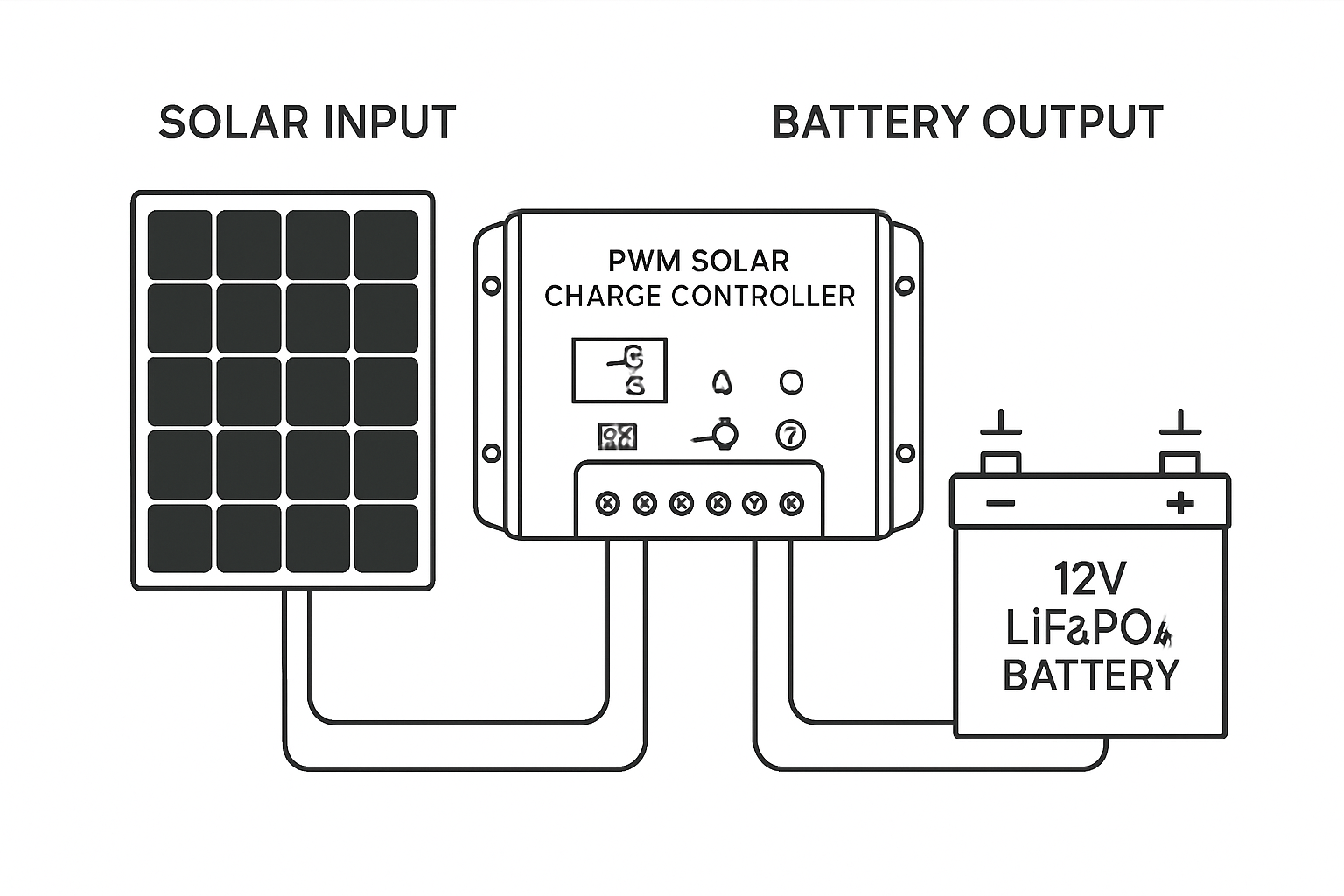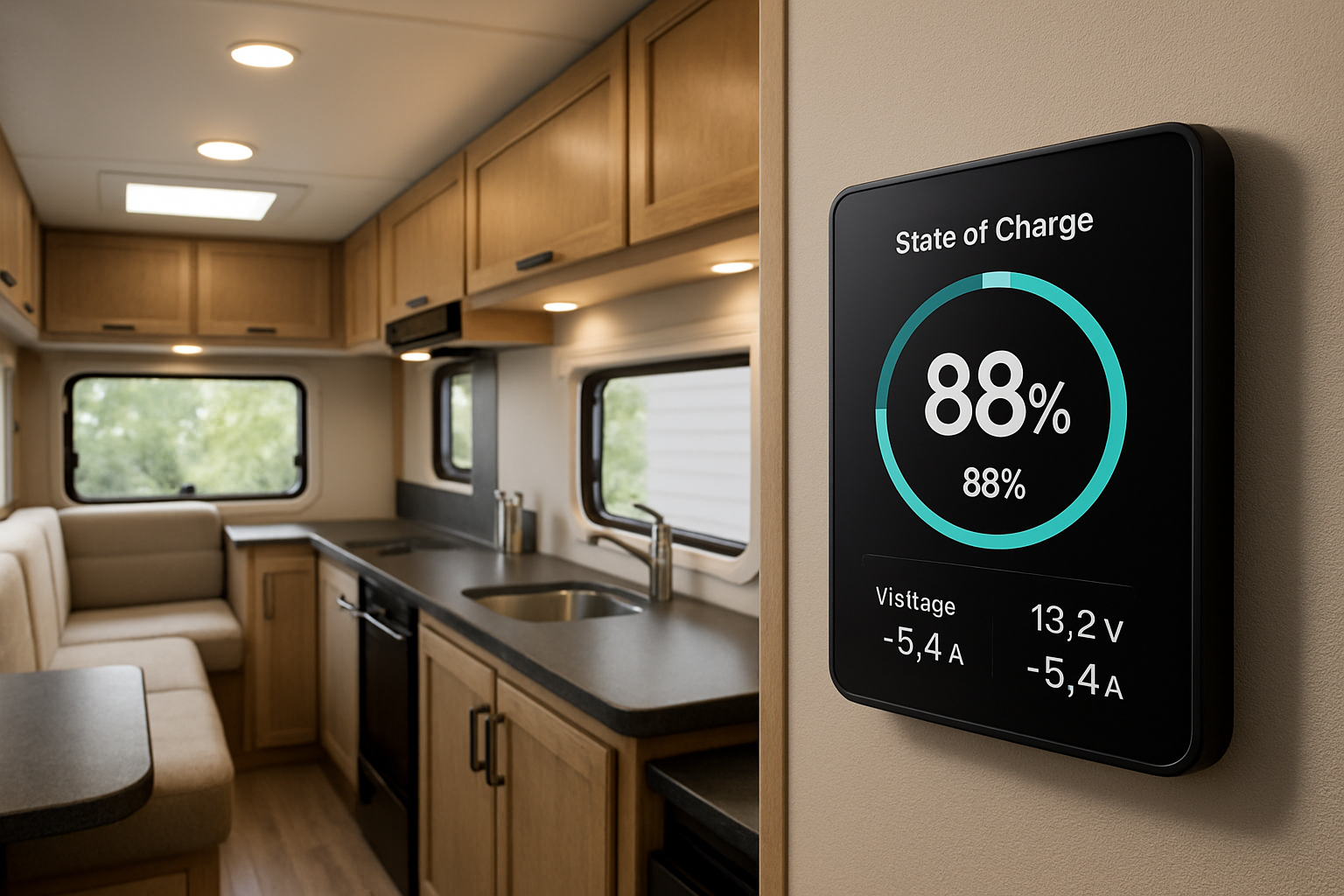In any off-grid or hybrid solar power system, the charge controller serves as the central hub for energy management. It's a critical device that protects your battery bank from overcharging and optimizes the power flowing from your solar panels. Selecting the right charge controller technology is one of the most important decisions you'll make, directly impacting system efficiency, flexibility, and the lifespan of your batteries. The two dominant technologies on the market are Pulse Width Modulation (PWM) and Maximum Power Point Tracking (MPPT). This article provides a detailed technical breakdown of both, helping you determine the best fit for your specific application, particularly when using modern, high-performance LiFePO4 batteries.
Understanding the Fundamentals: How Solar Charge Controllers Work
Before comparing MPPT and PWM, it's helpful to understand the basic function of a solar charge controller. Its primary job is to regulate the voltage and current from the solar panels to the batteries, ensuring a safe and effective charging process.
What is a Solar Charge Controller?
A solar charge controller is an electronic regulator placed between your solar panels and your battery bank. It manages the energy flow to prevent overcharging, which can damage batteries and significantly reduce their lifespan. It also prevents reverse current at night, where power could flow from the batteries back to the panels. By managing the charging stages—bulk, absorption, and float—it ensures the battery receives the optimal amount of energy for its state of charge.
Introducing PWM (Pulse Width Modulation) Technology
PWM is the more established of the two technologies. A PWM controller functions like a simple, high-speed electronic switch. It connects the solar array directly to the battery bank and uses a series of rapid on-off pulses to modulate the current. When the battery is low, the "switch" is on most of the time. As the battery charges, the controller shortens the duration of these "on" pulses to taper the energy flow. A key characteristic of PWM controllers is that they force the solar panel's voltage down to match the battery's voltage.
Introducing MPPT (Maximum Power Point Tracking) Technology
MPPT technology represents a more advanced approach. An MPPT controller is a sophisticated DC-to-DC converter that decouples the solar panel voltage from the battery voltage. Every solar panel has an optimal operating voltage and current combination where it produces the most power, known as the "Maximum Power Point." This point fluctuates with environmental conditions like sunlight intensity and temperature. The MPPT controller's algorithm constantly "tracks" this moving target to harvest the maximum available power from the panel at all times. It then converts this power to the appropriate voltage for the battery, often boosting the charging current in the process.
Head-to-Head Comparison: MPPT vs. PWM
While both technologies serve the same fundamental purpose, their methods and results differ significantly. The choice between them depends on system size, climate, panel configuration, and budget.
Efficiency and Power Harvesting
The most significant advantage of MPPT technology is its superior efficiency. MPPT controllers can harvest 10-30% more power from the same solar array compared to PWM controllers. This efficiency gain comes from the controller's ability to convert excess panel voltage into additional charging current. For instance, if you have a panel producing 100 watts at 18V connected to a 12V battery, a PWM controller will pull the panel's voltage down to around 12V, effectively harvesting only about 67 watts (12V * 5.5A). An MPPT controller, however, will take the full 100 watts at 18V and convert it to approximately 8.3 amps at 12V, capturing nearly all the available power. As energy systems evolve, maximizing the output from every component becomes crucial. The International Energy Agency (IEA) highlights the importance of efficiency in distributed energy resources for overall system reliability.
System Voltage and Flexibility
PWM controllers require the nominal voltage of the solar array to match the nominal voltage of the battery bank. This means you must use a 12V panel to charge a 12V battery. This limitation restricts system design and often prevents the use of more readily available and cost-effective 60-cell grid-tie panels. MPPT controllers offer far greater flexibility. They can accept a much higher input voltage from the solar array and step it down to charge a lower-voltage battery bank. This allows you to use higher-voltage panels or wire panels in series, which reduces current, allows for smaller wire gauges, and minimizes power loss over longer distances.
Performance in Different Conditions
Environmental conditions play a huge role in controller performance. MPPT controllers have a distinct advantage in cooler climates. Solar panels produce higher voltage at lower temperatures; an MPPT controller can capture this extra voltage and convert it into more charging amps. Similarly, on cloudy days or in low-light situations, an MPPT controller will actively scan for the panel's sweet spot to extract every bit of available energy. A PWM controller is most effective in consistently hot, sunny climates where the panel's operating voltage is naturally lower and closer to the battery's voltage.
Cost and Application
PWM controllers have a lower upfront cost, making them a viable option for small, simple, and budget-sensitive systems. For applications like solar-powered gate openers, small lighting systems, or trickle charging, where maximizing every watt is not the primary goal, a PWM controller can be sufficient. You can learn more about these use cases in When is a PWM Controller Better for an Off-Grid Solar System? For most other systems, especially medium to large off-grid homes, farms, or mobile applications, the higher initial cost of an MPPT controller is justified by its superior performance and long-term energy gains. The increased energy harvest often pays for the price difference in a relatively short time. For a detailed breakdown, see this Is an MPPT Solar Controller Worth the Extra Cost? .
| Feature | PWM (Pulse Width Modulation) | MPPT (Maximum Power Point Tracking) |
|---|---|---|
| Efficiency | 75-80% | 90-99% |
| Voltage Handling | Panel voltage must match battery voltage. | Can step down higher panel voltage to lower battery voltage. |
| Performance in Cold/Cloudy Weather | Less efficient; cannot harvest excess voltage. | Highly efficient; converts excess voltage to charging current. |
| System Size | Best for small, low-power systems (under ~200W). | Ideal for medium to large systems. |
| Cost | Lower initial cost. | Higher initial cost. |
Choosing the Right Controller for Your System
Making the right choice involves analyzing your specific needs, from the size of your solar array to the type of batteries you use.
Sizing Your Charge Controller
Properly sizing your controller is critical for safety and performance. For PWM controllers, the rating is based on the solar array's short-circuit current (Isc). For MPPT controllers, sizing is based on the array's total wattage and voltage. Always ensure the controller's voltage and amperage ratings are not exceeded by your solar array's output. For a comprehensive walkthrough, consult The Ultimate Guide to Sizing MPPT vs PWM Controllers.
The Impact of Battery Chemistry: LiFePO4 Considerations
Modern battery chemistries like Lithium Iron Phosphate (LiFePO4) have specific charging requirements to ensure safety and longevity. LiFePO4 batteries benefit from precise voltage control and multi-stage charging algorithms. MPPT controllers are generally better suited for this task as they often come with pre-programmed LiFePO4 charging profiles or allow for custom settings. Their efficiency also ensures that your high-performance battery bank is charged as quickly and completely as possible. This is why integrated solutions, such as our all-in-one home energy storage systems, utilize advanced hybrid controllers with MPPT technology to optimize performance with our LiFePO4 batteries. To learn more, explore MPPT vs PWM: Which Is Best for Your LiFePO4 Battery Bank? and How to Maximize Your 12V Lithium Battery's Solar Charging.
Common Misconceptions
Several myths surround charge controller technology. One is that MPPT is always the better choice. While true for most systems, a PWM controller can be a more economical and perfectly adequate choice for very small, cost-sensitive projects. Another misconception is that PWM technology is obsolete. It still holds a valuable niche in the market for specific, low-power applications. Don't let common myths compromise your system's performance; get the facts at 5 MPPT Controller Myths Costing Your Home Energy Storage.
Advanced Concepts and System Integration
Charge controller technology continues to evolve, becoming smarter and more integrated with other system components.
Hybrid Power Controllers and Integrated Systems
Many modern energy solutions now feature hybrid power controllers or all-in-one inverter-chargers. These devices combine the functionality of an MPPT solar charge controller, an inverter, and a battery charger into a single unit. This integration simplifies installation, reduces component clutter, and ensures all parts work together seamlessly. Our focus on developing complete energy storage systems (ESS) is built on this principle of optimized integration, where the charge controller is a core component of a reliable, scalable power solution. The interaction between these components is key to overall efficiency, a topic covered in our guide on solar storage performance.
The Future of Charge Controller Technology
The future lies in smarter, more communicative devices. The trend towards intelligent energy management, as highlighted by the International Renewable Energy Agency (IRENA) in its research on smart charging, is shaping the next generation of solar controllers. Future controllers will offer better integration with home energy management systems, allowing for more sophisticated control over how and when you use your solar power. Furthermore, research supported by the U.S. Department of Energy into advanced power electronics and grid-forming inverters points to a future where even off-grid systems can contribute to greater energy resilience through intelligent controls.
Final Thoughts: Making an Informed Decision
The choice between a PWM and an MPPT charge controller is an investment in your energy system's efficiency and future performance. For small, cost-driven projects with panels matched to the battery voltage, a PWM controller is a practical choice. For virtually all other applications—especially those involving LiFePO4 batteries, larger solar arrays, or operation in variable weather—an MPPT controller is the superior technology. It will harvest significantly more energy over the system's lifetime, accelerating your path to energy independence.
By understanding the technical differences and aligning them with your system's goals, you can build a more robust, efficient, and reliable solar power solution. As shown in this Case Study: Boosting System Efficiency by Upgrading to MPPT, making the right choice from the start can yield substantial benefits.
Disclaimer: The information provided in this article is for educational purposes only. It is not intended as financial or legal advice. Please consult with a qualified professional before making any investment decisions or implementing any solar energy project.





Leave a comment
All comments are moderated before being published.
This site is protected by hCaptcha and the hCaptcha Privacy Policy and Terms of Service apply.